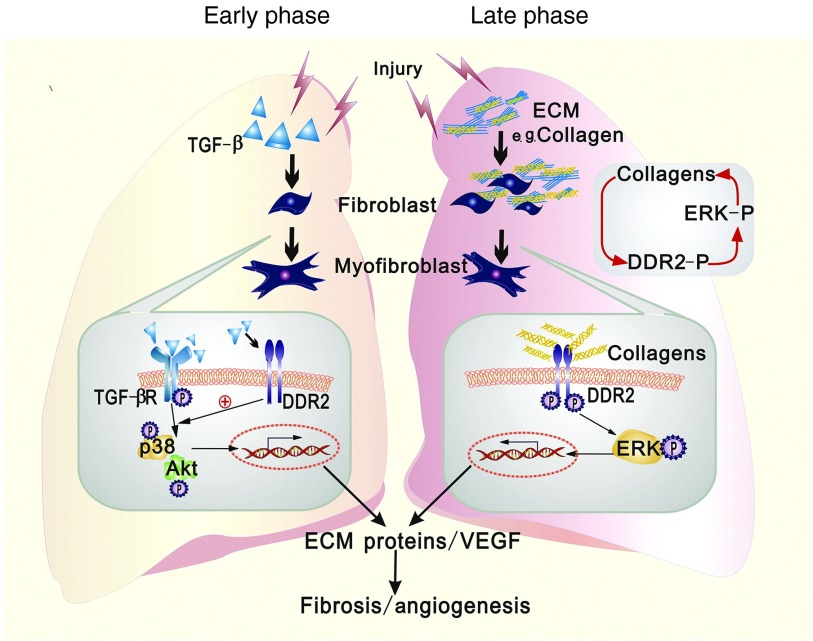Figure 7.
Schematic depicting the role of discoidin domain receptor 2 (DDR2) in mediating the activation of myofibroblasts during lung fibrosis. In the early phase of fibrotic reaction, transforming growth factor (TGF)-β stimulation of lung fibroblasts induces up-regulated expression of DDR2, which may enable DDR2 to cooperate with TGF-β receptor to activate p38 and Akt, consequently leading to the cell phenotypic transition toward myofibroblasts. This action of DDR2 is independent of the presence of its ligands, fibrillar collagens (left). When the fibrotic process is already established, the abundant fibrillar collagens within fibrotic foci may gradually augment the activation of myofibroblasts via the activation of DDR2/ extracellular signal-regulated kinase (ERK) axis in a positive feedback manner (right). In both phases, DDR2 promotes the oversynthesis of extracellular matrix (ECM) components as well as the secretion of vascular endothelial growth factor (VEGF), which eventually causes massive fibrosis and angiogenesis.

